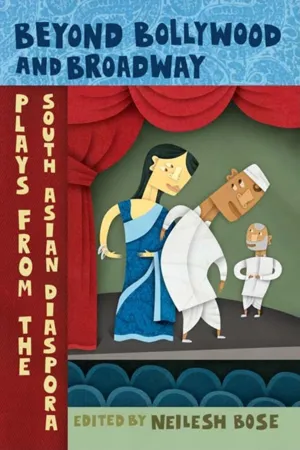![]()
PART ONE
The United States
In 1790, a Madras resident visited Salem, Massachusetts along with a sea captain, marking the first recorded entry of a South Asian into North America. In the late eighteenth and nineteenth centuries, as European colonial domination in South Asia grew and the new American polity developed, almost one thousand South Asians arrived on American shores. Along with occasional magicians, circus entertainers, and religious mendicants, some eminent public figures visited America, including Swami Vivekenanda, a nineteenth-century religious reformer who visited Chicago to address the World Parliament of Religions in 1893. Most Indians who arrived in the nineteenth century did not settle permanently. Popular history mentions a group of Indian slaves who found their way to Massachusetts in the seventeenth century, but their definitive story has yet to be written (Rangaswamy 2000: 15–72).
As the twentieth century progressed, South Asians in America began to acquire a larger political purpose and started to assimilate into U.S. society. Punjab was largely spared the system of indentured labor that sent workers across the British Empire. But a small group of Punjabi farmers endured a fate similar to that of their counterparts across the African and West Indian outposts of the empire. Attracted by promises of work and wealth by Canadian company representatives touring India to seek cheap labor, many farmers immigrated to present-day western North America. The first port of entry was British Columbia; the American coastal regions in Washington, Oregon, and California then followed. These migratory Indians sought work in lumber mills and railroads. A few thousand emigrated in the first two decades of the twentieth century, forming a visible population of South Asians on the west coast. Like their contemporary Chinese laborers, they fought the bitter anti-Asian laws that prevented them from owning land and, at times, gaining citizenship (Lal 1999: 42–48; Jensen 1988: 24–56). When work in mills and railroads often proved impossible, many immigrants sought to farm their own land; after much travail, they managed to do so successfully.
In addition to these farmers, students and political activists set up the Ghadr (revolution) Party, based in San Francisco around 1910. Famous anticolonialists such as Har Dayal and Taraknath Das published a newspaper and organized the South Asian community of California to oppose British colonialism. The party’s constituency included several thousand students and politically minded individuals in Canada and the United States. Among them were Punjabi laborers who had arrived a few years earlier. With links to Germany, India, and the United Kingdom, the Ghadr Party formed a significant chapter in the history of Indian nationalist resistance to colonial rule. As World War I began, American and British forces crushed any hope for Ghadr to stay afloat, and the party more or less disintegrated by the end of the war.1
The population of South Asians in the United States remained steady, between 2,000 and 3,000 until 1965, as it was limited by the effects of the Immigration Act of 1917. From the early 1920s, a string of applications for citizenship by Indians set in motion the American practice of defining “whiteness” as a criterion for citizenship. In the early 1900s, a few Indians, including Taraknath Das, did acquire citizenship, while others did not. By 1922, sixty-nine Indians had applied for and received American citizenship. That year, Bhagat Singh Thind, a veteran of World War I, applied for citizenship but was denied because the courts deemed him “nonwhite” to the common man, even though he had argued by scientific rationale that he was of caste-Hindu, and therefore, Aryan, stock. This set off a trend of denaturalization, and forty-three Indians were stripped of their citizenship. In 1924, the Asiatic Exclusion Act was formed to restrict the entry of Asians into the United States and to prevent Asians from acquiring citizenship (Jensen 1988: 246–269; Lal 1999: 42–48).
By the 1940s, a few thousand Indians were living, working, and (in some cases) owning property in the United States. The country officially did not support British colonization in India, and President Franklin Roosevelt did not publicly support Winston’s Churchill’s dogged insistence on retaining India during World War II. Americans began to enter India during World War II. In 1943, thousands of American troops descended upon India to help defend the Allies from Japanese aggression on the eastern front, as Burma had been recently conquered by the Japanese. Inspired by the 1941 Atlantic Charter that promoted the right of self-government to all peoples, Indian activists lobbied the U.S. government to change its laws. After the war, in 1946, naturalization and citizenship were granted to Indians, albeit with quotas. About 7,000 Indians entered the United States between 1948 and 1965. Their numbers grew slowly in the 1950s, and California’s Dilip Singh Saund become the first Indian American Congressman in 1956.
The 1965 Immigration Reform Act signed by President Lyndon Johnson ushered in a new era of middle-class professional migration and settlement. An official preference for professional and formally educated South Asians allowed large numbers of migrants with capital and personal connections, and skills to succeed in American work life (such as English-language proficiency) to settle and flourish in America. Since the 1960s, doctors, businessmen, lawyers, computer professionals, and other such groups have become a familiar part of the U.S. social landscape.
Second- and third-generation South Asian Americans appear on television, write for newspapers, and occupy visible locations in contemporary American society. Unlike the earlier Punjabi laborers or anticolonial revolutionaries, this wave of migrants encountered an America defined by pluralist multiculturalism in a world of nation-states, and they arrived as Indians, Pakistanis, or Bangladeshis. Also unlike the earlier migrants, they c...
